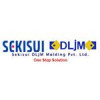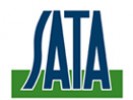
Get AmbitionBox App
Faster and better experience!
Filter interviews by
Annai Enterprises Production Supervisor Interview Questions and Answers
Annai Enterprises Production Supervisor Interview Experiences
1 interview found
I applied via Walk-in and was interviewed in Jun 2022. There were 2 interview rounds.

(1 Question)
- Q1. Personal, Any one questions.
Interview Preparation Tips
- Production
- Maintenance
- Quality
Top trending discussions






Interview questions from similar companies

(3 Questions)
- Q1. Tell Somthing about yourself
- Ans.
Experienced production supervisor with a strong background in managing teams and optimizing processes.
Over 5 years of experience in supervising production lines
Skilled in implementing lean manufacturing principles to improve efficiency
Proven track record of meeting production targets and deadlines
Excellent communication and leadership skills
Certified in Six Sigma for process improvement
- Q2. What is tolerance
- Ans.
Tolerance refers to the acceptable range of variation in a process or product without affecting its quality.
Tolerance is the maximum allowable deviation from a specified dimension or value.
It ensures that products meet quality standards even with minor variations.
For example, in manufacturing, a part may have a tolerance of +/- 0.1mm for its dimensions.
Tolerance can also refer to the ability to withstand or endure some
- Q3. Are you able to work,Where temp is high
- Ans.
Yes, I am able to work in high temperatures.
I have experience working in environments with high temperatures.
I am physically fit and able to handle the heat.
I am aware of the necessary precautions to take in high temperature conditions.
I am comfortable wearing appropriate protective gear in hot conditions.
Interview Preparation Tips

Production Supervisor Interview Questions & Answers
Calsonic Kansei Motherson Auto Productsposted on 18 Jan 2024
I applied via Job Fair and was interviewed in Dec 2023. There was 1 interview round.
(2 Questions)
- Q1. When was 5's indruced?
- Ans.
5S was introduced in the 1960s as part of the Toyota Production System.
5S is a methodology for organizing and improving workplace efficiency.
It originated in Japan and was popularized by Toyota.
The 5S principles are Sort, Set in Order, Shine, Standardize, and Sustain.
It aims to eliminate waste, improve safety, and increase productivity.
Example: Implementing 5S in a manufacturing facility involves organizing tools, labe...
- Q2. What is the SOP full form?
- Ans.
SOP stands for Standard Operating Procedure.
SOP is a set of step-by-step instructions that outline how to perform a particular task or process.
It ensures consistency, efficiency, and quality in operations.
SOPs are commonly used in industries such as manufacturing, healthcare, and food processing.
Examples of SOPs include guidelines for equipment maintenance, safety procedures, and quality control measures.

Production Supervisor Interview Questions & Answers
Maxxis Rubberposted on 19 Oct 2023

(3 Questions)
- Q1. What is the 7QC ?
- Ans.
7QC stands for Seven Quality Control Tools, which are a set of techniques used for quality improvement in production processes.
The 7QC include tools such as Pareto charts, cause-and-effect diagrams, scatter diagrams, control charts, histograms, check sheets, and flowcharts.
These tools help identify and solve quality-related issues in production processes.
For example, a Pareto chart can help prioritize the most signific...
- Q2. What is the TPM?
- Ans.
TPM stands for Total Productive Maintenance, a proactive approach to maintenance that aims to maximize equipment effectiveness.
TPM involves empowering operators to take ownership of equipment maintenance
Focuses on preventing breakdowns and improving overall equipment efficiency
Incorporates principles such as autonomous maintenance, planned maintenance, and continuous improvement
Example: Implementing daily equipment che...
- Q3. What is the TPM target?
- Ans.
TPM target stands for Total Productive Maintenance target, which is a goal set to maximize the efficiency and effectiveness of production equipment.
TPM target is a goal set to minimize equipment downtime and maximize productivity.
It involves proactive maintenance practices to prevent breakdowns and improve overall equipment effectiveness.
Examples of TPM targets include reducing unplanned downtime by 20% or increasing e...

An aptitude test is designed to assess an individual's ability to perform certain tasks or react to a range of different situations. These tests are often used by educational institutions and employers to evaluate potential candidates' skills, talents, and potential for success in a specific role or academic program. Here are some key details about aptitude tests:
1. **Purpose**: Aptitude tests are used to measure a variety of skills, including logical reasoning, verbal ability, numerical skills, and spatial awareness. They help to identify strengths and weaknesses and predict future performance.
2. **Types**:
- **Verbal Reasoning**: Assesses understanding and reasoning using concepts framed in words.
- **Numerical Reasoning**: Tests ability to work with numbers, including basic arithmetic, data interpretation, and logical problem-solving.
- **Abstract Reasoning**: Evaluates the ability to identify patterns, logical rules, and trends in new data.
- **Mechanical Reasoning**: Measures understanding of mechanical and physical principles.
- **Spatial Reasoning**: Assesses the ability to visualize and manipulate objects.
3. **Format**: Aptitude tests can be multiple-choice, true/false, or involve practical problem-solving tasks. They are often timed, with specific sections dedicated to each type of reasoning.
4. **Preparation**:
- **Practice Tests**: Taking practice tests helps familiarize with the format and types of questions.
- **Study Guides**: Reviewing basic concepts in mathematics, grammar, and logical reasoning.
- **Skills Development**: Enhancing skills through puzzles, reading, and other related activities.
5. **Usage**:
- **Recruitment**: Employers use aptitude tests to screen job applicants and find the best fit for a role.
- **Education**: Schools and colleges use these tests for admissions, placement, and identifying areas for student improvement.
- **Career Counseling**: Helps individuals understand their strengths and areas for improvement, guiding career choices.
6. **Scoring**: Scores are typically presented as percentiles, showing how a test-taker compares to a norm group. Higher scores indicate better performance relative to the norm group.
If you have specific questions about a certain type of aptitude test or need preparation tips, feel free to ask!
(2 Questions)
- Q1. Tell me about yourself.Tip: Provide a brief overview of your professional background, focusing on experiences relevant to the job you're applying for. Highlight your key achievements and skills.
- Q2. Know YourselfAssess and interest.
Interview Preparation Tips

Production Engineer Interview Questions & Answers
Seoyon E-hwa Automotiveposted on 26 Oct 2024
I applied via Approached by Company and was interviewed in Sep 2024. There was 1 interview round.
(1 Question)
- Q1. Machine related questions Ans Injections moulding horizontal type machine handle

(2 Questions)
- Q1. About experience
- Q2. About product development
(2 Questions)
- Q1. Product specification
- Q2. Product development
Interview Preparation Tips

Senior Production Engineer Interview Questions & Answers
Sekisui Dljm Moldingposted on 10 Jan 2025
I was interviewed before Jan 2024.
(5 Questions)
- Q1. About the troubleshootings
- Q2. Machines details
- Q3. New mold trial Knowledge
- Q4. Oee calculation
- Q5. About the current company PPM

Production Engineer Interview Questions & Answers
Caparo Engineering Indiaposted on 3 May 2024
I applied via Recruitment Consulltant and was interviewed in Nov 2023. There was 1 interview round.
(2 Questions)
- Q1. Tell me about yourself.
- Q2. What is gemba, power press, type of tool in power press, stamping process
- Ans.
Gemba is a Japanese term for 'the real place', power press is a machine used for stamping metal, tools used in power press include dies and punches, stamping process involves shaping metal by pressing it between dies.
Gemba is a Japanese term meaning 'the real place' or 'the actual place where work is done'
Power press is a machine used in metalworking to shape or cut metal using dies and punches
Tools used in power press...

Production Interview Questions & Answers
Interface Microsystemsposted on 27 Oct 2023
I applied via Campus Placement and was interviewed in Apr 2023. There were 4 interview rounds.

(2 Questions)
- Q1. What is diaode . And uses
- Ans.
A diode is a semiconductor device that allows current to flow in one direction only.
Diodes are commonly used in rectifiers to convert AC to DC power.
They are also used in signal processing, voltage regulation, and protection circuits.
Examples include light-emitting diodes (LEDs) and photodiodes.
Diodes can be used in logic gates and digital circuits for switching and signal processing.
- Q2. What is ldr and use
- Ans.
LDR stands for Light Dependent Resistor. It is a type of resistor that changes its resistance based on the amount of light it is exposed to.
LDRs are commonly used in light sensing applications, such as automatic street lights or camera exposure control.
The resistance of an LDR decreases as the intensity of light increases.
LDRs are often used in combination with other components like transistors or microcontrollers to c
(2 Questions)
- Q1. About yourself and your city
- Q2. Your choice and shift
(1 Question)
- Q1. Draw a diagram of half wave rectifier
- Ans.
A half wave rectifier is a circuit that converts AC voltage to pulsating DC voltage by allowing only one half of the input waveform to pass through.
The input AC voltage is applied to a diode which only allows current to flow in one direction.
During the positive half cycle of the input waveform, the diode conducts and allows current to flow through the load.
During the negative half cycle, the diode blocks current flow, ...
Interview Preparation Tips
Annai Enterprises Interview FAQs
Tell us how to improve this page.
Interview Questions for Popular Designations
- Production Engineer Interview Questions
- Production Manager Interview Questions
- Production Officer Interview Questions
- Executive Production Interview Questions
- Production Interview Questions
- Senior Production Engineer Interview Questions
- Production Chemist Interview Questions
- Production Operator Interview Questions
- Show more
Interview Questions from Similar Companies
Annai Enterprises Production Supervisor Reviews and Ratings
based on 1 review
Rating in categories
|
Quality Inspector
10
salaries
| ₹1 L/yr - ₹2.4 L/yr |
|
Quality Engineer
7
salaries
| ₹1.5 L/yr - ₹2.5 L/yr |
|
Accountant
4
salaries
| ₹1.8 L/yr - ₹3 L/yr |
|
Production Engineer
4
salaries
| ₹1.1 L/yr - ₹3.5 L/yr |
|
Managing Partner
4
salaries
| ₹22.6 L/yr - ₹23.2 L/yr |

Caparo Engineering India

Marelli

Enco Engineers Combine

Seoyon E-hwa Automotive
- Home >
- Interviews >
- Annai Enterprises Interview Questions >
- Annai Enterprises Production Supervisor Interview Questions







